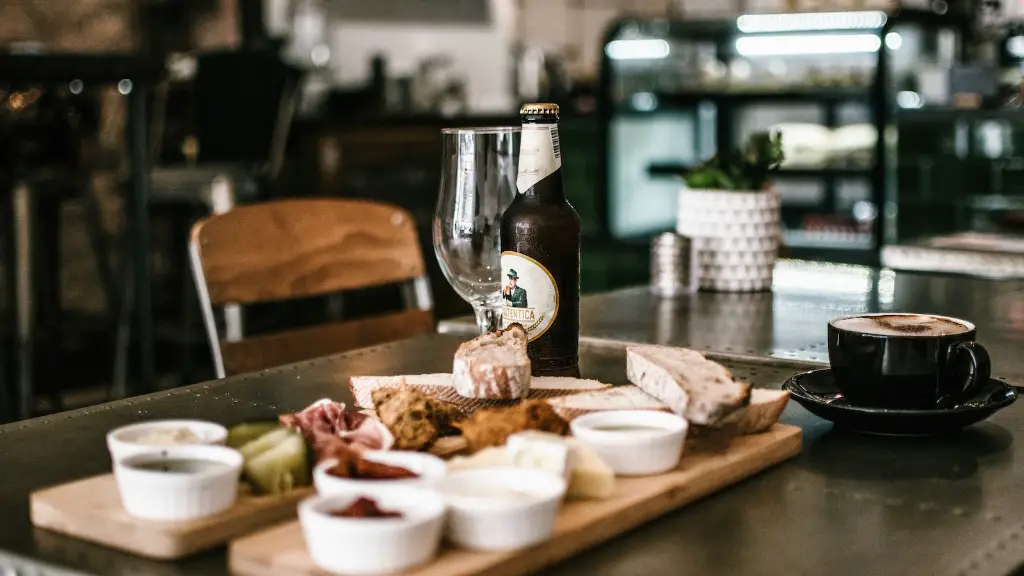The target market for a coffee shop is typically people who are looking for a place to relax and enjoy a cup of coffee. However, the target market can also be people who are looking for a place to work or study.
A coffee shop’s target market is usually people who live or work near the shop. The shop tries to attract these customers with promises of quick service, good coffee, and a comfortable place to relax or work.
Who are the customers of a coffee shop?
There are many different types of cafe customers and each one has their own unique needs and wants. Here are some of the most common types of cafe customers:
Families: Families love coming to cafes for a chance to relax and treat their kids to a meal or a sweet treat. Your cafe should be welcoming and accommodating to families.
Flexible Workers: Many people who work from home or have flexible schedules often take advantage of cafes as their personal office space. These customers need a comfortable place to work and may be more likely to purchase food and drinks if they feel comfortable in your cafe.
The Regulars: These are the customers who come to your cafe day in and day out. They know your staff by name and are always up for a chat. Make sure to take care of your regulars and they will be loyal customers for life.
The Passers-By: These are the customers who are just passing by and may not even know your cafe exists. Make sure your cafe is visible from the street and that your signage is clear and inviting. You may only have one chance to make a good impression on these customers so make it count!
There are some differences between the target market for consumers who buy coffee online and those who go to coffee shops. For coffee shop customers, the most popular age group is 25-34, followed by 18-24. The most popular gender for coffee shop customers is male, followed by female.
What is Starbucks target market
Starbucks has a wide target market, which includes both males and females within the age group of 22 to 60 years. The company focuses mostly on urban and suburban areas, and its target market is relatively affluent – middle and upper class. Additionally, the target market is also educated, socially aware, active and busy.
The coffee shop industry is a monopolistically competitive market; this entails a market situation where there are a lot of large companies competing, but each company has some degree of market power, being able to determine its own price and ergo have an insignificantly small share of the market (low concentration).
Who goes to coffee shops the most?
There are nine different types of customers who will go to your coffee shop. They are the coffee nerd, the wifi obsessor, the freelancer/artist/influencer, the socially conscious hipster, the anxious speed demon, the first-daters, the chit-chatter, and the avid reader. Each type of customer has their own unique reasons for coming to your coffee shop.
This is likely because women are more likely to be working during the morning, and so have less time to visit a coffee shop. However, during the afternoon and early evening, women are more likely to have free time to visit a coffee shop.
What age buys the most coffee?
The younger generations are increasing their coffee intake at a rapid pace. Sixty-five percent of Millennials aged 25-39 reported drinking coffee in the past day, setting a NCDT record high for the age group. Among Gen Z, 46% of respondents aged 18-24 said the same, a figure that has increased 10% since January. The reasons for this sudden increase in coffee consumption are many and varied, but the end result is the same: more and more young people are starting their day with a cup of joe.
Companies use different types of target marketing to reach different groups of consumers. The three most common types of target marketing fall into demographic, geographic, or psychographic categories.
Demographic target marketing is the process of targeting a specific group of consumers based on factors like age, gender, income, etc. This type of target marketing is often used to reach specific groups that a company thinks would be interested in their product or service.
Geographic target marketing is the process of targeting a specific group of consumers based on their location. This type of target marketing is often used to reach consumers in specific areas that a company thinks would be interested in their product or service.
Psychographic target marketing is the process of targeting a specific group of consumers based on their psychological factors. This type of target marketing is often used to reach specific groups that a company thinks would be interested in their product or service.
Who is your target market example
Target customers are important because they are the subset of the broader target market that is most likely to purchase your product. It is important to identify your target customers so that you can market your product more effectively to them.
There are four main target markets that businesses can focus on: geographic, demographic, psychographic, and behavioral. Each target market has its own unique characteristics that can be leveraged to capture new customers and grow a business.
Geographic target markets are based on region, such as country, state, city, or even neighborhood. businesses can use geographic targeting to focus on specific areas that are most likely to generate new customers.
Demographic target markets are based on factors like age, gender, income, occupation, and education level. businesses can use demographic targeting to identify customer segments that are most likely to be interested in their products or services.
Psychographic target markets are based on lifestyle choices and personality traits. businesses can use psychographic targeting to reach customer segments that share similar values and interests.
Behavioral target markets are based on customer buying habits and patterns. businesses can use behavioral targeting to reach customers that are likely to make a purchase based on their past behavior.
What are the 5 target markets?
1. Demographic segmentation divides a market by variables such as age, gender, income, occupation, and education level.
2. Psychographic segmentation divides a market by variables such as lifestyle, personality, and values.
3. Behavioral segmentation divides a market by variables such as purchase history, brand loyalty, and responses to marketing campaigns.
4. Geographic segmentation divides a market by variables such as location, climate, and geology.
5. Firmographic segmentation divides a market by variables such as company size, industry, and financial health.
To define your target market effectively, you’ll need to do some research. Gathering statistics and other market research data helps you to understand your potential customers and their needs and make better marketing decisions.
Who is Starbucks ideal customer
Starbucks has most of its customers belonging to the upper economic segment. It targets youngsters and people who seek a peaceful space to drink coffee. Its high-end customers fall in the 22-50 age group, both male and female.
To identify your target market and best serve your market, you need to:
Know your customers. Understand their needs and wants. Be aware of their buying habits.
By doing this, you will be able to better target your marketing efforts and sell more effectively to your target market.
Who is the main consumer of coffee?
Coffee is very popular in Finland, with the average Finn drinking nearly four cups a day. Coffee breaks are legally mandated for Finnish workers, with two 10-minute breaks being the norm. Finland is the world’s biggest consumer of coffee on a per-person basis, making it a key part of the country’s culture.
Coffee is one of the most popular beverages in the world and the United States is the largest coffee market. The coffee industry is a major contributor to the economy and provides employment for millions of people.
Coffee production in South America is responsible for supplying the majority of the world’s coffee. The region produces 77 million 60 kilogram bags of coffee per year, which is more than any other region in the world. The United States has a large coffee market, with revenues reaching over 81 billion US dollars. The coffee industry is a major contributor to the economy and provides employment for millions of people.
Conclusion
The target market for a coffee shop is people who drink coffee.
The target market for a coffee shop can vary depending on the location, price point, and offerings of the coffee shop. Generally, the target market for coffee shops are people who live or work nearby who are looking for a quick and easy caffeine fix.





